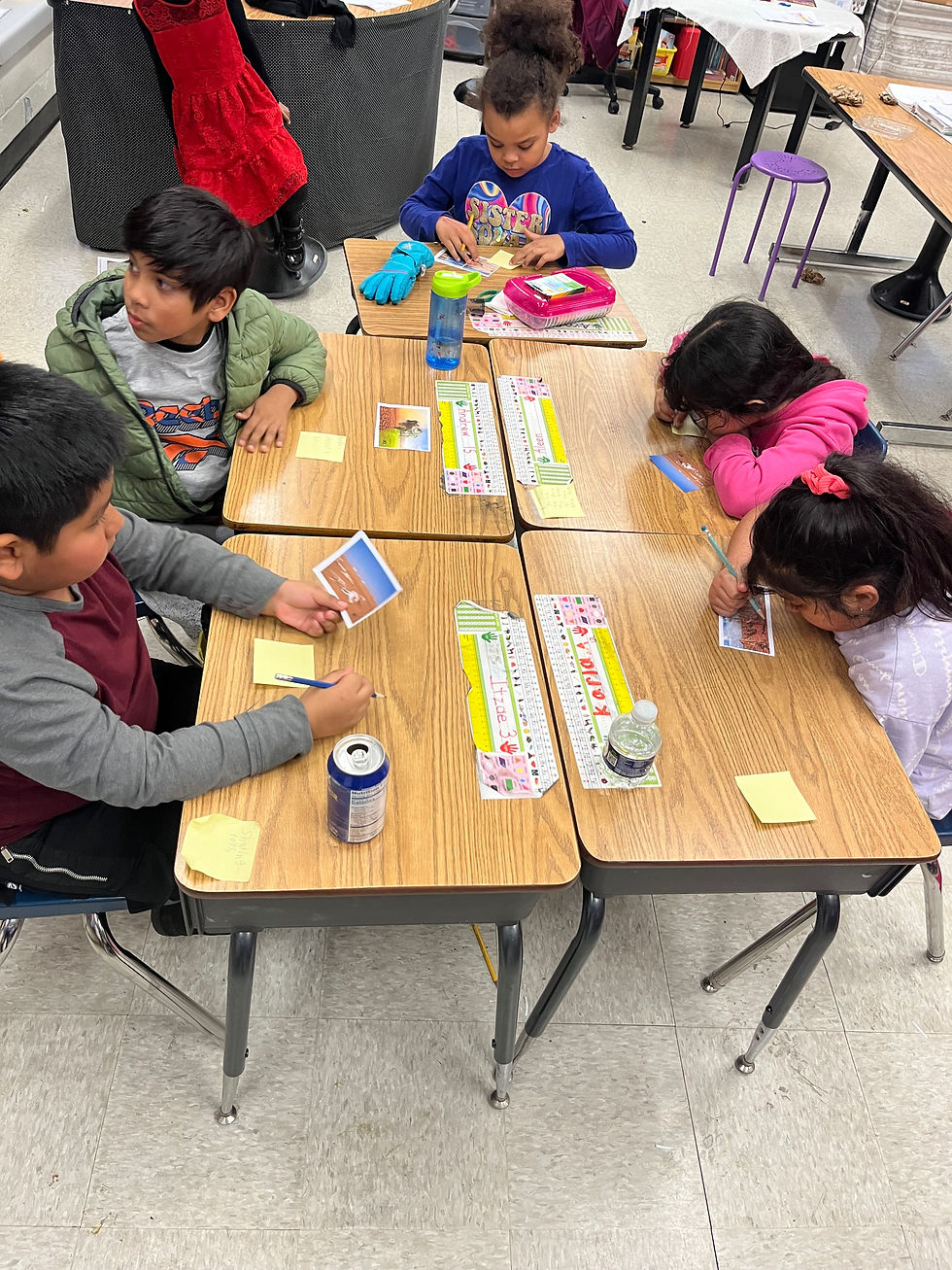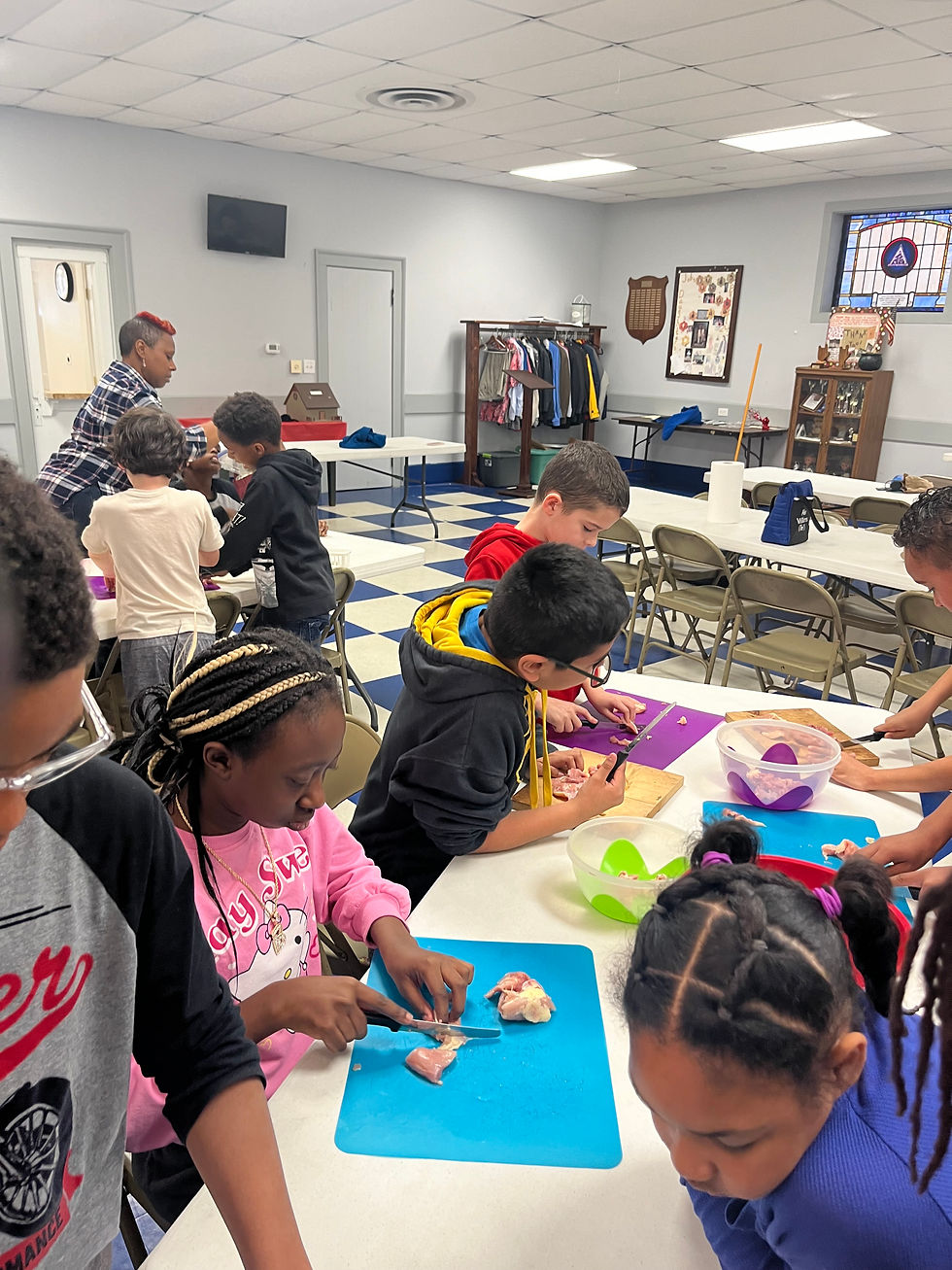Clinical Practice Evaluation 1 Formative Feedback.
- marva331
- Jan 8, 2024
- 7 min read
Updated: Apr 2, 2024
Professional Dispositions of Learners
GCU Faculty Supervisor Cassandra Goodwyn
Mentor: Cassie Shelburne High Expectations: Teacher candidate should believe that all students could learn and should set support realistic expectation for students success. These expectations should be communicated in positive ways.
Comments: Ms. Vargas taught a reading lesson to her second-grade class. The students were learning to identify and use antonyms and synonyms. A detailed lesson plan was provided with the observation. The students were seated in groups of three or four. The teacher candidate began the lesson by reviewing previously learned material on homophones. She briefly discussed homophones and called on students to provide examples of homophones. Then, Ms. Vargas led the students to discuss antonyms and synonyms. She asked the students to discuss the use of synonyms with their group. As the children engaged in discussions, Ms. Vargas moved from group to group, listening and commenting on their conversation about synonyms. Afterward, the candidate gained the class's attention and asked each group to share their discussion. Later, Ms. Vargas reviewed the learning target for the lesson with the children. The student learning target was embedded in the lesson plan template and displayed on the whiteboard.
After reviewing the learning target, Ms. Vargas turned to a chart and examined the differences between homophones and synonyms. She provided examples of synonyms and asked the students for examples. Then, Ms. Vargas discussed antonyms. Again, the candidate provided examples and asked the children for examples of antonyms. Ms. Vargas used word stickers of antonyms and pasted them on her chart. She did the same for synonyms. Ms. Vargas told the children they would play the same game she played in their groups. The candidate gave each group a bag of words, and then she reviewed the words with the class. Next, Ms. Vargas reviewed and modeled the directions. The students began the game by identifying synonyms. The candidate read a sentence, and the students were asked to identify the correct synonym. The child with the most words won the game. When the class completed identifying synonyms, Ms. Vargas asked each group who won the game, and she reinforced the concept of synonyms. The candidate provided praise and began the next activity.
The students were to draw a portrait of themselves and write words in the portrait to identify themselves. Ms. Vargas provided an example by drawing a portrait of herself on the whiteboard. She wrote synonyms to describe herself. After completing the tasks, the candidate called various students to share their pictures and the synonyms they chose to describe themselves.
Afterward, Ms. Vargas transitioned to an assessment activity. She distributed a worksheet and instructed the children to color the synonyms red and the antonyms blue. While the students worked on the assessment, Ms. Vargas worked with two students. Again, she provided the directions for the two children and then reinforced the instructions by speaking Spanish. The candidate guided the students through the assessment by reading the words in English and asking them in English and Spanish if the words were the same or opposite. By the end of the observation, the candidate spoke to the students using predominantly English. Closure was not observed.
The mentor teacher stated that Mrs. Vargas has worked in different roles in the school for several years. She is currently under contract and serves as a second-grade teacher. The candidate consistently plans with the second-grade teaching team and will work with the school's math and reading resource teachers. She uses her native Spanish speaking and writing skills to strengthen parent-school relationships and to support ELL students in their English language acquisition skills. Ms. Vargas uses the technology the school district offers to plan and deliver her lessons. The candidate regularly communicates with her parents and keeps them abreast of their child’s educational progress. Respect for The Diversity of Others: Teacher candidates should be sensitive to individual learning and the social needs of students and embrace the cultural diversity of the community. They should develop and maintain educational communities marked by respect for others. They should interact with their students, fellow educators, administrators, parents, and other community members with courtesy and civility and establish relationships characterized by respect and rapport.
Comments: Mrs. Vargas’s communications were appropriate, and she maintained a professional demeanor throughout the observation. The teacher candidate used a moderate tone of voice. She called each student by name. Mrs. Vargas used a variety of instructional methods to teach the children. These included visual, auditory, verbal, and physical. She used a wide range of activities and materials to teach the lesson. The lesson plan contained all the necessary components needed to teach the lesson. The plan included information for children with differentiated and ESL needs. Mrs. Vargas’ lesson plan and observed lesson included an anticipatory set, direct instruction, guided practice, and independent practice. Fairness:Teacher candidates should promote social justice and equity, maintain appropriate standards of confidentiality, and exercise fairness in all areas including assessment.
Comments: Mrs. Vargas maintained a learning environment conducive to instruction. The teacher candidate appropriately modeled active listening skills and was nondiscriminatory when addressing students. Mrs. Vargas was observed to use several strategies to gain and maintain the children’s attention and alertness. She incorporated a game into her lesson. The candidate appropriately redirected students when needed and called on students an equal number of times.
The mentor teacher noted that Mrs. Vargas follows the procedures, policies, and laws regarding professional teaching practice. The teacher candidate follows all school and district regulations. Professional Conduct:Teacher candidates should exercise sound judgment and ethical behavior. They should be a positive role model within their community.
Comments:Ms. Vargas’ communications with the observer have been very professional. The teacher candidate maintained a positive and calm demeanor throughout the observation. The mentor teacher noted that the candidate provides professional education services in a nondiscriminatory manner. The mentor indicated that Ms. Vargas has been in various roles in the school for several years. The candidate maximizes every opportunity to learn from her colleagues and will fully participate in professional development sessions offered by the school district. The cooperating teacher noted that Ms. Vargas will follow through on given tasks. The candidate communicates appropriately with all school staff and interacts with resource professionals ethically. Reflection:Teacher candidates should recognize that reflection combined with experience leads to growth as a professional. Educators should be thoughtful about their professional practice, critically examine it, and seek continual improvement.
Comments:Ms. Vargas was able to identify the glows and growth from the observation. The mentor teacher noted that the candidate analyzes the strengths and identifies growth areas for the students in the classroom. The teacher candidate thoroughly planned her lesson with the second-grade teaching team and frequently asked the mentor teacher questions. The mentor stated that Ms. Vargas maximizes every opportunity to learn from her colleagues in the building and other teachers on the team.
Curiosity: Teacher candidates should promote and support curiosity and encourage active inquiry.
Comments: The teacher candidate used good questioning strategies. Ms. Vargas’ questioning strategies prompted different types of thinking based on the kind of question she asked. The teacher candidate was observed to use question stems of what, why, and how. She also asked comparison questions. Ms. Vargas was observed to provide relevant scenarios related to the children’s daily lives when discussing homophones, synonyms, and antonyms.
Honesty: Teacher candidates should model integrity by their words and actions.
Comments: Ms. Vargas communicated and modeled concepts of fairness throughout her lesson. The mentor teacher said the teacher candidate demonstrates fairness through her words and actions. The teacher candidate has been forthcoming and straightforward when communicating various aspects of her clinical practice experience.
Compassion: Teacher candidates should demonstrate professional friendliness, warmth, and genuine caring in their relationships with others while providing intellectual, emotional, and spiritual support.
Comments: Ms. Vargas demonstrated professional friendliness throughout the lesson. She used an appropriate tone of voice when delivering the lesson. The teacher candidate appropriately redirected her students’ attention when needed. Ms. Vargas facilitated a lesson that enabled her students to synthesize curriculum objectives for enduring understandings. The mentor also noted that Mr. Vargas provides social-emotional support to all students.
Advocacy:Teacher candidates understand the impact of community involvement and servant leadership as it applies to the welfare of others in the educational setting.
Comments: Ms. Vargas communicated and modeled expectations at the onset of the lesson and throughout the class. During the observation, she reassured students by modeling active listening and providing redirection and praise. Ms. Vargas planned varied activities to meet the various learning styles of her students. The mentor teacher reported that the candidate is in tune with the needs of the children. She voluntarily uses her Spanish speaking and writing skills to bridge and assist with school-home communications for students and parents.
Dedication: Teacher candidates should be committed to the profession of teaching and learning.
Comments: Ms. Vargas has demonstrated her commitment to the teaching profession. She has a clear understanding of her responsibilities and duties in teaching. The teacher candidate showed a clear concept of blending developmentally appropriate practices with state curriculum objectives. The teacher candidate knows the various technology platforms for delivering lessons and communicating with parents. The mentor teacher noted that Ms. Vargas uses assessment data to enhance, reteach, or reinforce lessons.
Overall Feedback: Strengths:
Ms. Vargas provided a lesson plan that included all the critical components of the lesson. The lesson plan included differentiated extended activities for students with differentiated needs.
Ms. Vargas used a variety of methods to teach the lesson. These included arranging students in cooperative learning groups, using a game, and giving an assessment.
Ms. Vargas appropriately addressed the children and redirected them when needed.
Ms. Vargas had all the necessary materials before the start of the lesson. This included words to post on the chart paper and game pieces in zip-lock bags.
Ms. Vargas made smooth transitions from one activity to the next.
Ms. Vargas included excitement in her lesson delivery by using different voice intonations and facial expressions.
Ms. Vargas worked with students in a small group. Opportunities for Growth:
Bring closure to every lesson. Suggestions/Ideas to Implement:
Continue to use formal and informal assessment data to reteach, enhance, and review curriculum concepts.




Comments